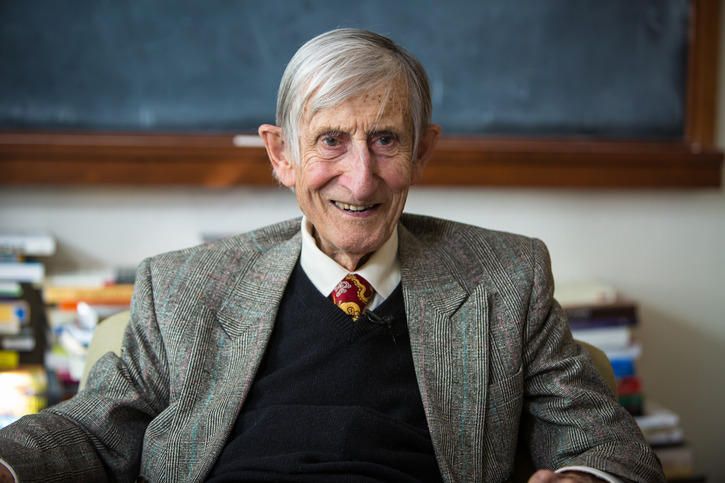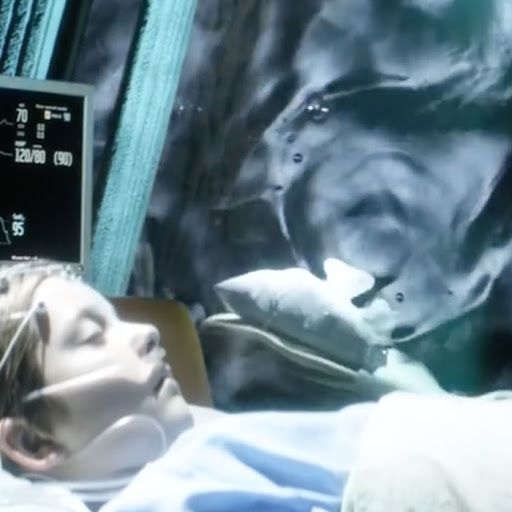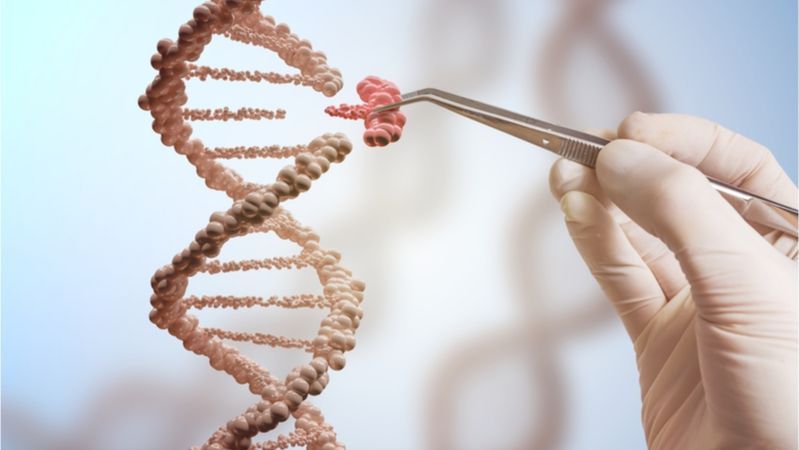We call this PTSD. The question is whether we can reprogram our nervous system? In Stealing Fire, authors Steven Kotler and Jamie Wheal discussed advances in psychology, technology, neurobiology and pharmacology — and whether they help us map healthy nervous systems? Can we then use that data and create new designer compounds to recalibrate the nervous systems of those suffering from PTSD? Can we tweak our nervous systems for human flourishing? I hope so. Recent breakthrough in MDMA psychotherapy might be only a taste of what’s to come. Filmed and toned by @j.elon.goodman ||@mapsnews @mapscanada @meetdelic @psychedelicsocietysf #psychedelics @synthesisrtrt #mentalhealth #creativity #depression #anxiety #psychotherapy #therapy #inspiration #motivation
Get the latest international news and world events from around the world.

Renowned Mathematician And Physicist Freeman Dyson Has Died At Age 96
Freeman Dyson, renowned scientist and scholar, has died at 96, according to his daughter Mia.
The British-born scientist and professor emeritus spent much of his career as a physics professor at the Institute for Advanced Study in Princeton, according to his biography on the institute’s website. He was among 29 scientists who supported the Obama administration’s 2015 nuclear deal with Iran. In 1967, he also acted as a military adviser regarding the use of tactical nuclear weapons in the Vietnam War, and in 1984 he wrote a book on the dangers of nuclear warfare.
A futurist and space-enthusiast, Dyson had several scientific concepts named after him, including the “Dyson Tree,” a genetically engineered plant that would be able to survive in a comet and grow in space. One of his ideas, the Dyson Sphere, was featured in an episode of the sci-fi series Star Trek.

Guardian Angel‘ Protein Molecule Inside Cells is Identified
O.o um what?
Over the past few years biologists have developed several lines of evidence showing that one particular protein molecule inside cells plays an extraordinary variety of life-protecting roles, so much so that the molecule has been dubbed a “guardian angel.” The findings are leading to greater knowledge of how life works and to a deeper understanding of the root causes of cancer.
So pervasive is the molecule’s role that scientists in four areas of biology were on the trail of it, each field unaware, until recently, of the protein’s importance in the others.
Molecular biologists, for example, were trying to learn more about how cells repair the genetic damage that is routinely inflicted by radiation, chemicals and even body heat. In another area of research, cell biologists were trying to understand how cells govern the timing of when they divide. Other cell biologists wanted to know how cells carry out a natural process called “programmed cell death,” or apoptosis, in which a cell literally commits suicide. And, finally, cancer researchers were puzzled by the fact that at least half of all victims had tumors with mutations in one particular gene — so many that they called the gene a “tumor suppressor” on the grounds that when it was knocked out, a cell was predisposed to become cancerous. A Four-Team Effort.

Join 24-Hour Round-the-World Conversation to Celebrate World Future Day, Hosted by the Millennium Project
Starting at 9PM EST tonight (noon New Zealand Time).
Press Release (ePRNews.com) — WASHINGTON — Feb 27, 2020 — World Future Day is March 1. This will be the seventh year that futurists and the general public will conduct a 24-hour, round-the-world conversation on the future on March 1 at 12 noon in whatever time zone they are in. Each year, total strangers discuss ideas about possible worlds of tomorrow in a relaxed, open, no-agenda conversation. Futures research is shared, collaborations are created, and new friendships are made.
The Millennium Project, a global foresight participatory think tank, will host this conversation on the future in collaboration with the Association of Professional Futurists (APF), Humanity+, UNESCO’s Global Futures Literacy Network, the World Academy of Art and Science (WAAS), and the World Futures Studies Federation (WFSF).
“Anybody can pull up a cyber-chair at this global table and join the discussion on ZOOM at: https://zoom.us/j/9795262723,” says Jerome Glenn, CEO of The Millennium Project. “Whatever time zone you are in, you are invited at 12:00 noon in your time zone. People drop in and out as they like. If people can’t come online at 12 noon, they are welcome to come online before or after that time as well.”

North Korea deals with coronavirus
NORTH Korea has brutally executed a coronavirus patient for going out in public, reports claim.
Kim Jong-un’s dictatorship is dealing with the virus with an iron fist after the man was put to his death for dodging quarantine to go to a public bath.
The patient was arrested by officers and immediately shot as the country takes sickening measures to avoid the killer outbreak spreading.

From Humanities to Metahumanities: Transhumanism and the Future of Education. Poppy Frances Gibson
When I tell people I am a transhumanist, it often raises an eyebrow – or several questions. What is transhumanism? What is a ‘posthuman’? Why would anyone want to live forever? This article will briefly respond to these questions (amongst others) and consider what this may mean for the education sector. Key questions will be identified in the area of transhumanism and education as four themes are considered: teachers, human hardware, curriculum and lifelong learning. With ‘trans’ meaning ‘across’, transhumanism is a ‘technoprogressive’ socio-political and intellectual movement (Porter, 2017) that involves transforming our primitive human selves into selves enhanced through technology. Transhumanism aims to develop our physical, emotional and cognitive capacities and thus to open up new possibilities and horizons of experience (Thompson, 2017). The end goal is one day to become ‘posthuman’: combating ageing and freeing ourselves from current biological limitations.

Unconscious patients can now ‘speak’ with brain-computer interface tech
When you see an unconscious patient in a movie, you sometimes see their thoughts onscreen (like in The 9th Life of Louis Drax, above) or at least hear a voiceover.
That may not entirely stay in science fiction. Adrian Owen, neuroscientist and Professor of Cognitive Neuroscience and Imaging at the University of Western Ontario, Canada, and his research team are using brain-computer interfaces with advanced technology to get answers directly from people who can’t answer for themselves any other way. Any critical decisions for patients unable to communicate are usually made for them.
3D printing might save your life one day. It’s transforming medicine and health care
What can 3D printing do for medicine? The “sky is the limit,” says Northwell Health researcher Dr. Todd Goldstein.

CRISPR Edited Immune Cells Successful in First U.S. Clinical Trial
Great news.
The successful delivery of CRISPR/Cas9 modified immune cells to cancer patients represents the first U.S. clinical trial to test the gene editing approach in humans.
Researchers from the Abramson Cancer Center of the University of Pennsylvania have published data suggesting that immune cells modified using the gene editing tool CRISPR/Cas9 are able to survive and function for months following delivery to cancer patients [1].
The research team demonstrated that T cells taken from patients and modified ex vivo (outside the body) can be safely returned to the patient and continue to survive and fight cancer. The cells were successfully edited in three ways: by deleting the TRAC, TRBC, and PDCD1 genes. In addition to these edits, a cancer-specific T cell receptor was inserted to target the NY-ESO-1 antigen to help improve the T cells’ ability to detect tumors.